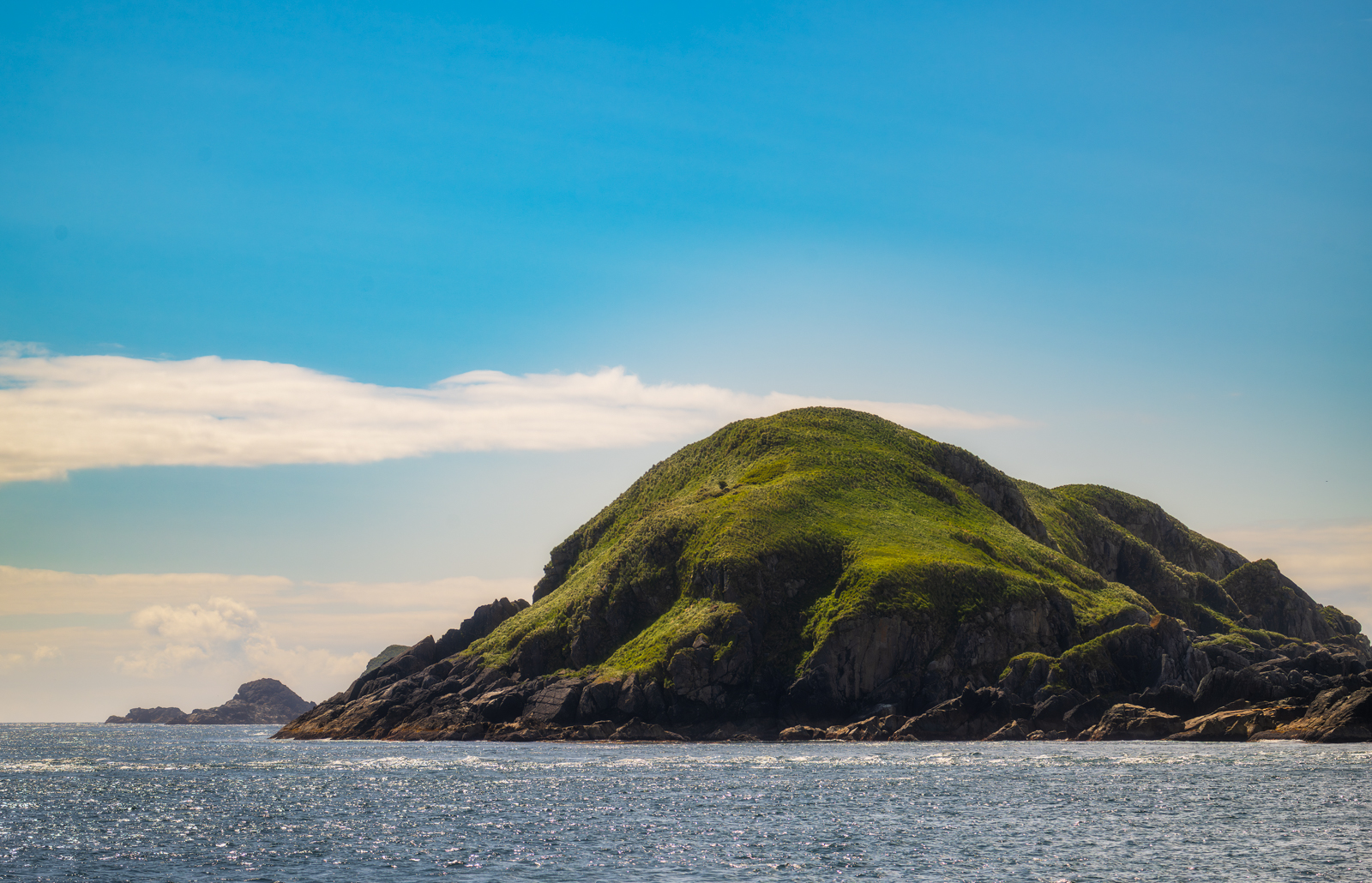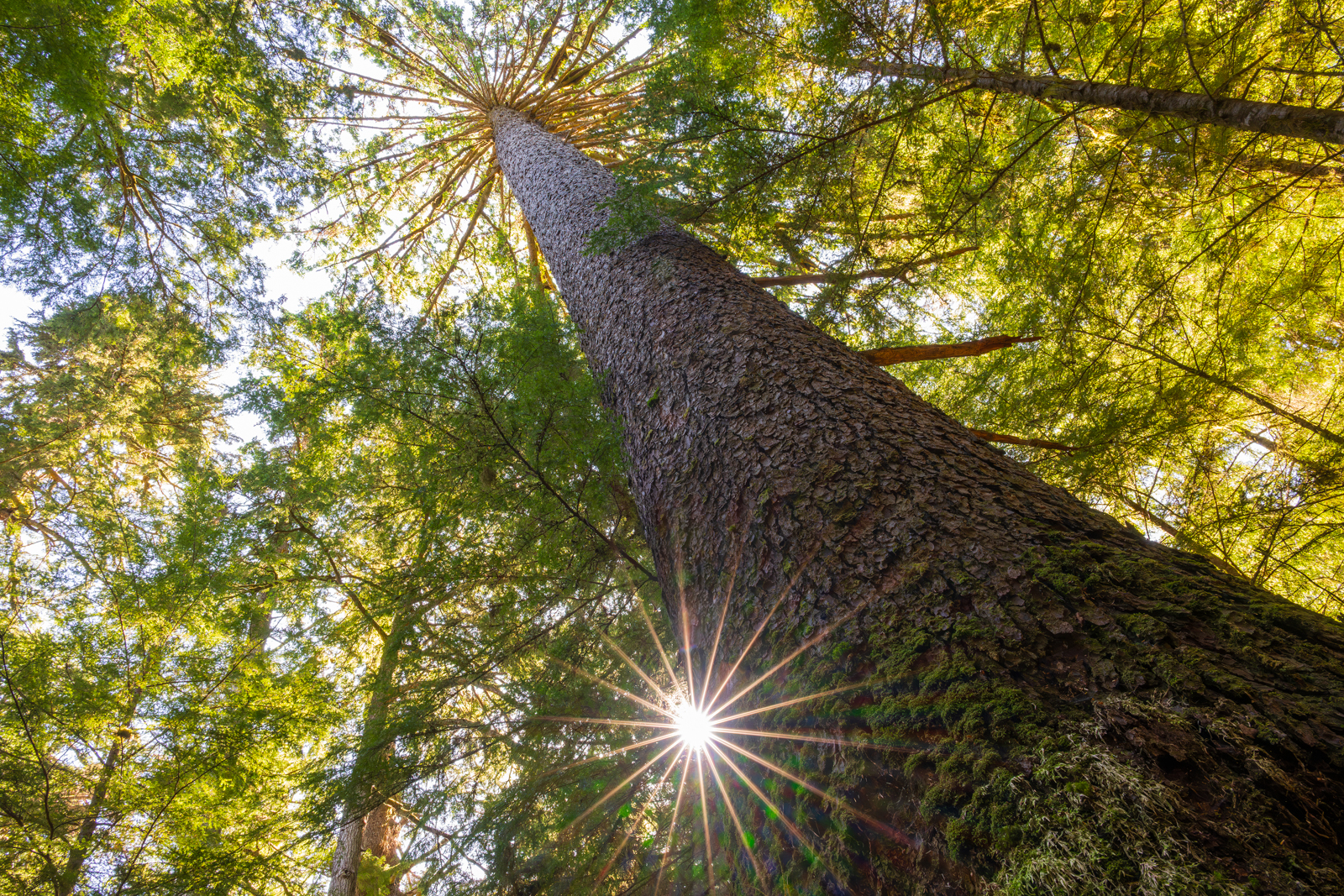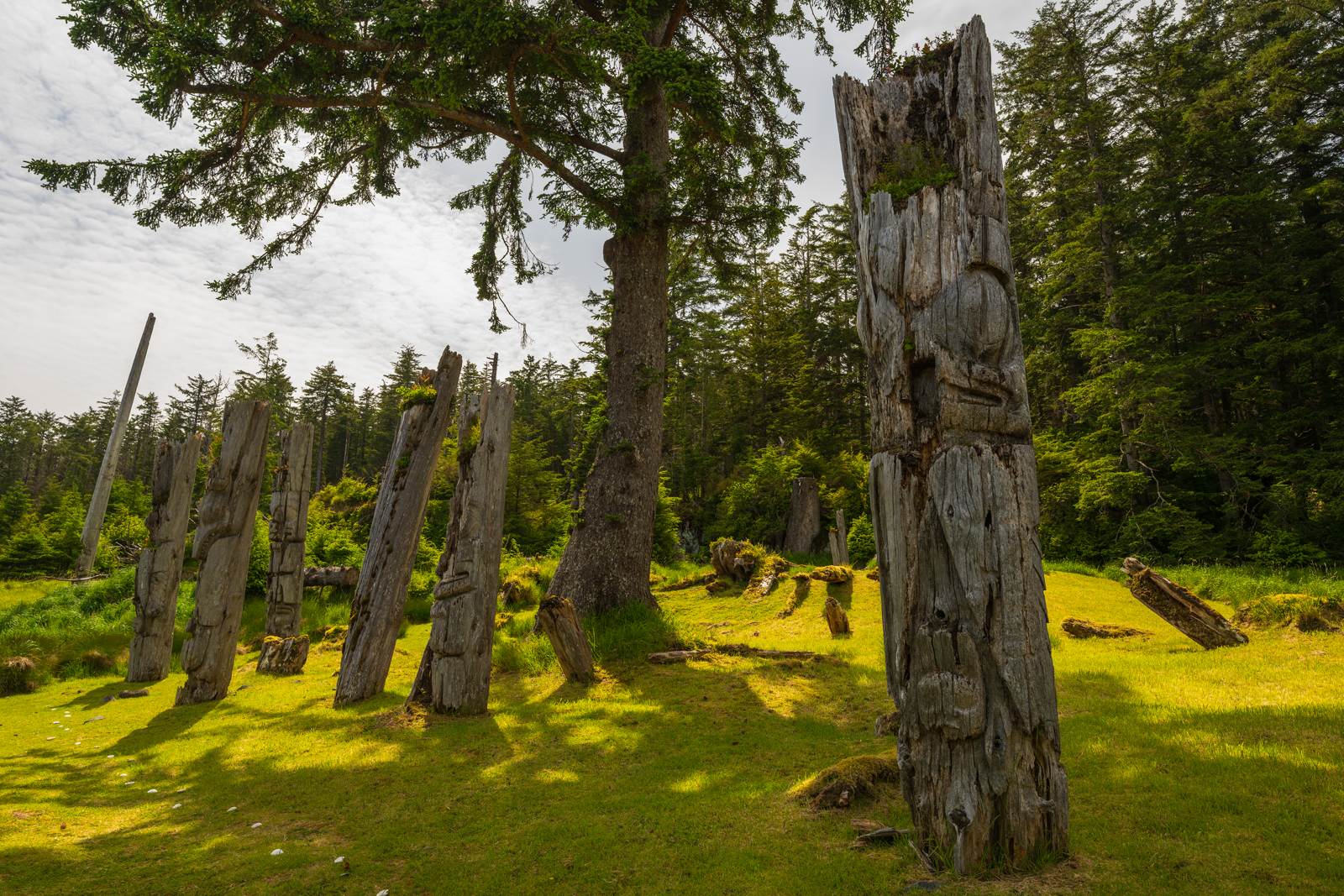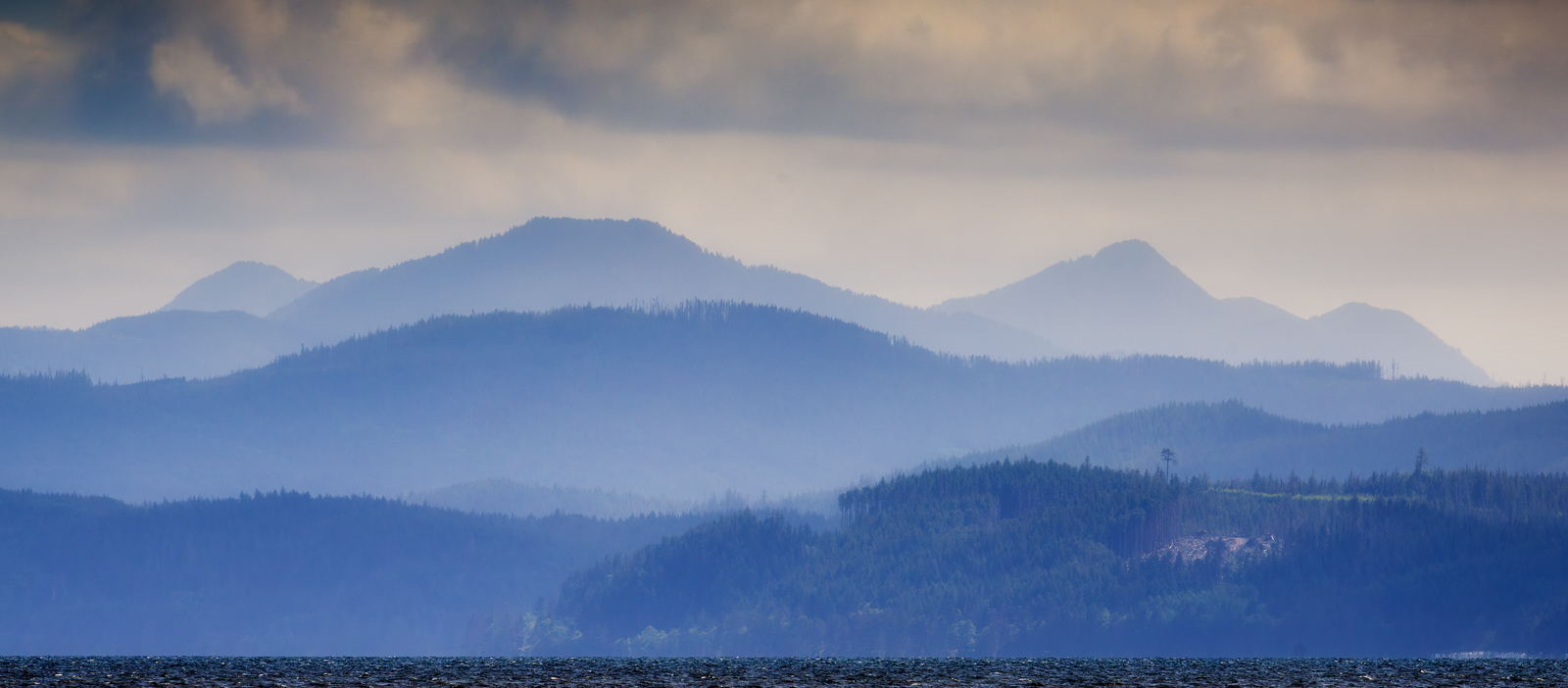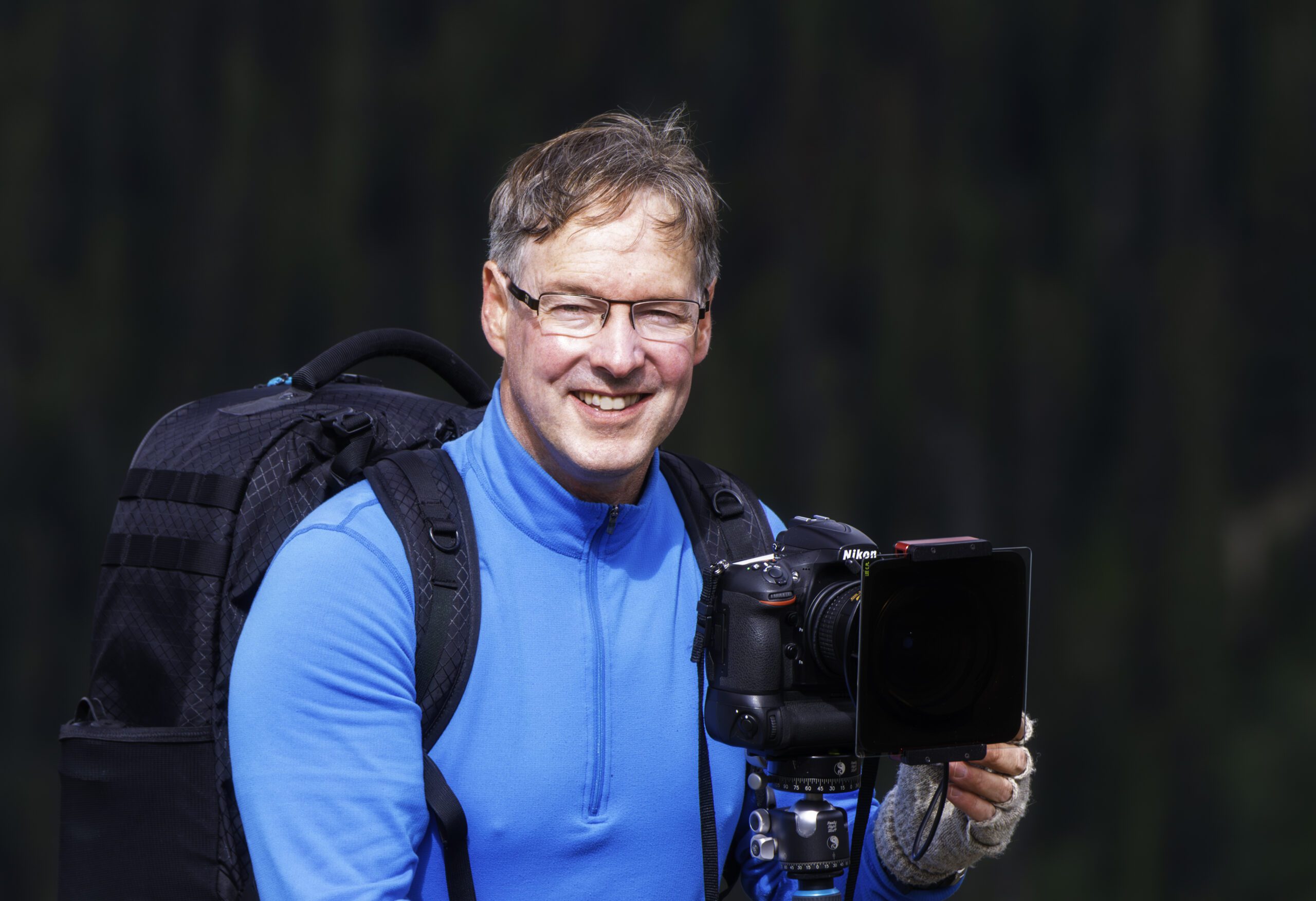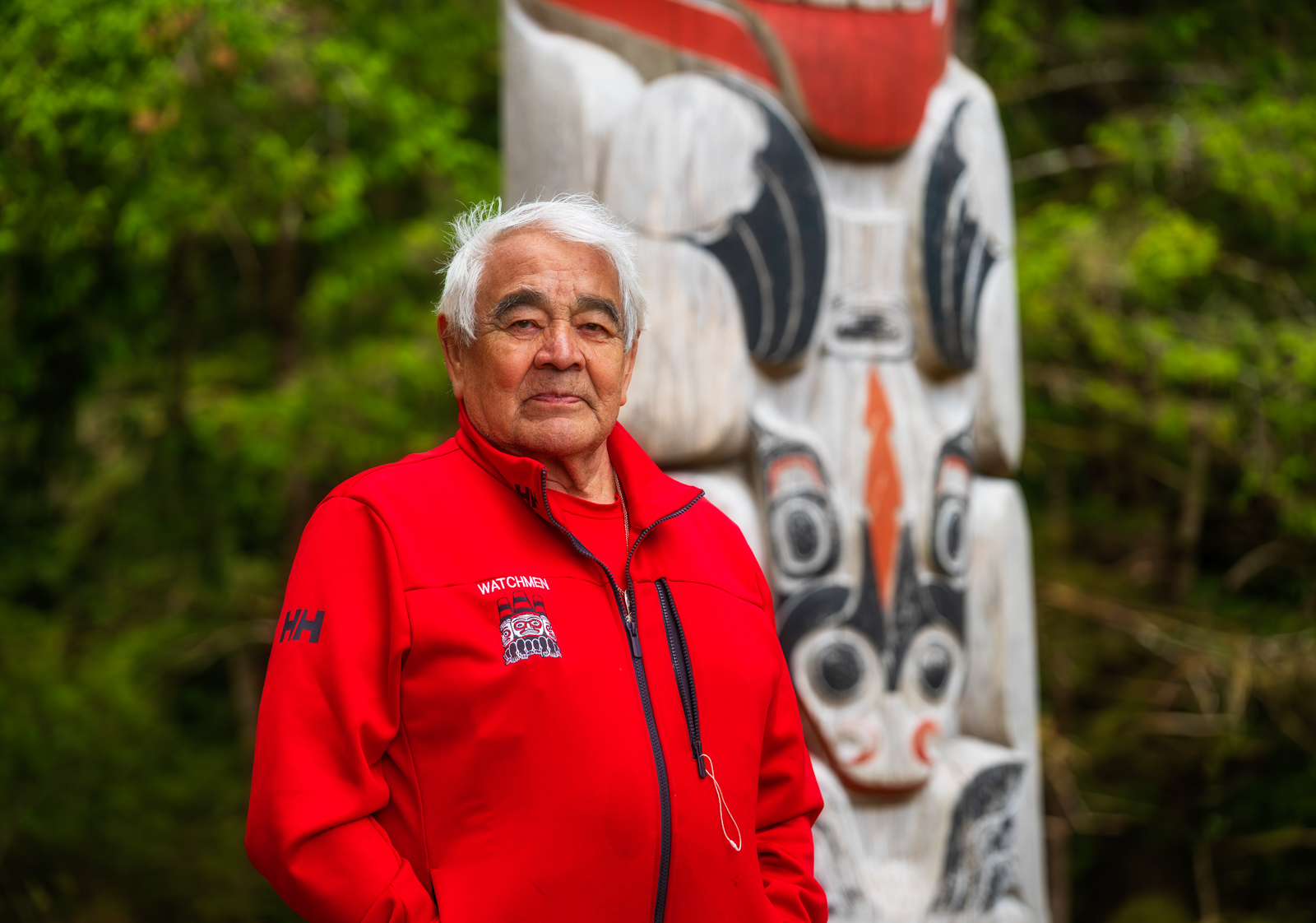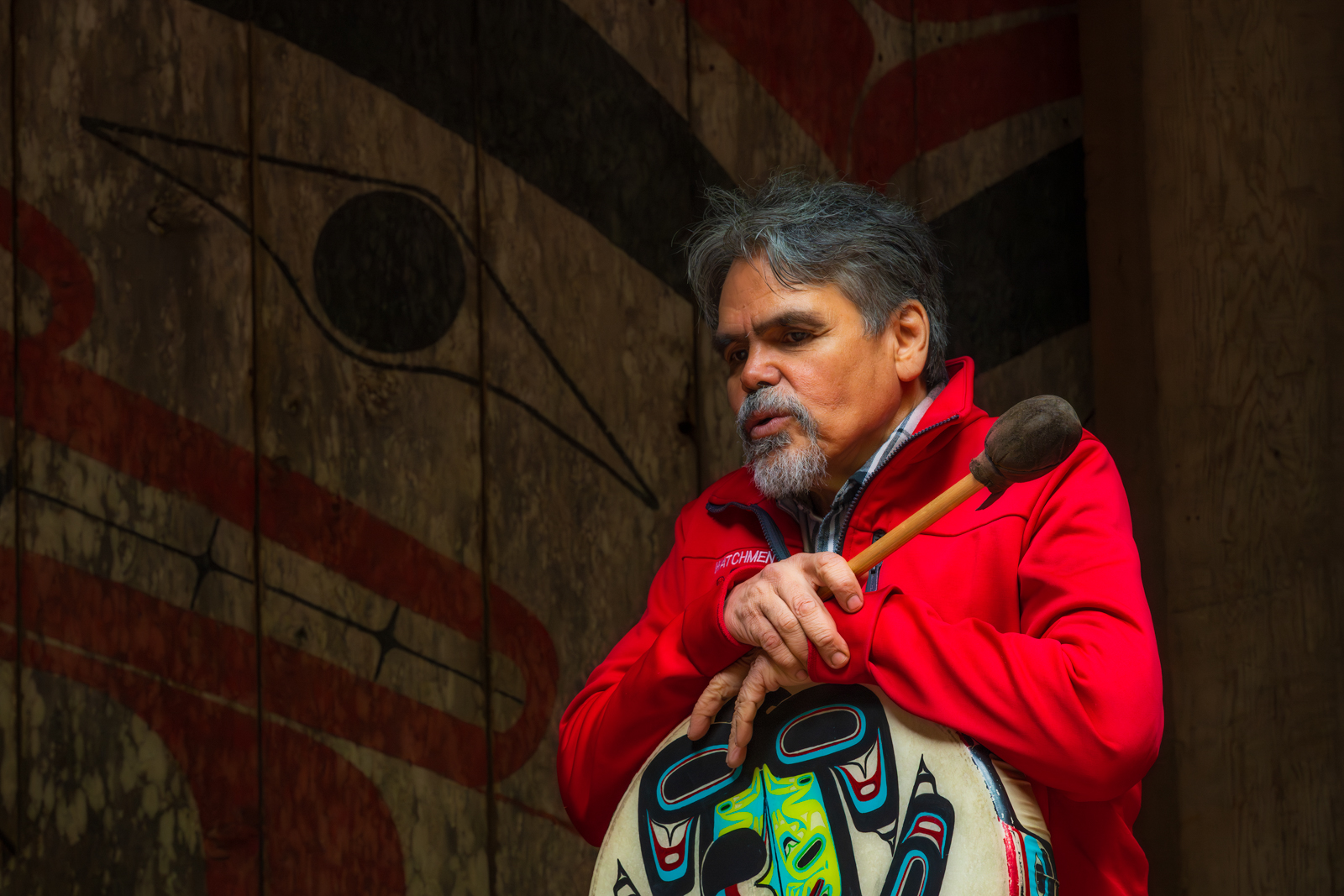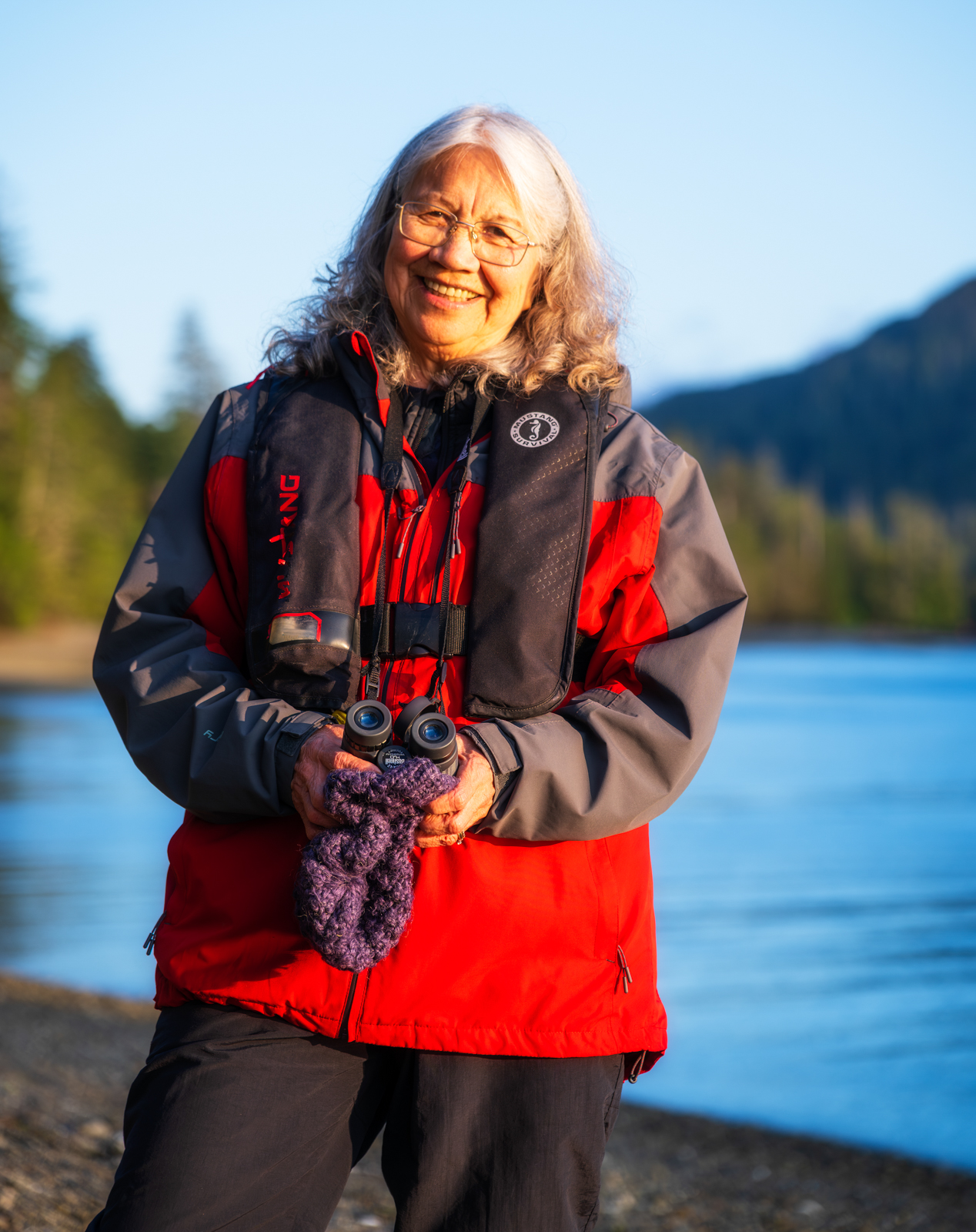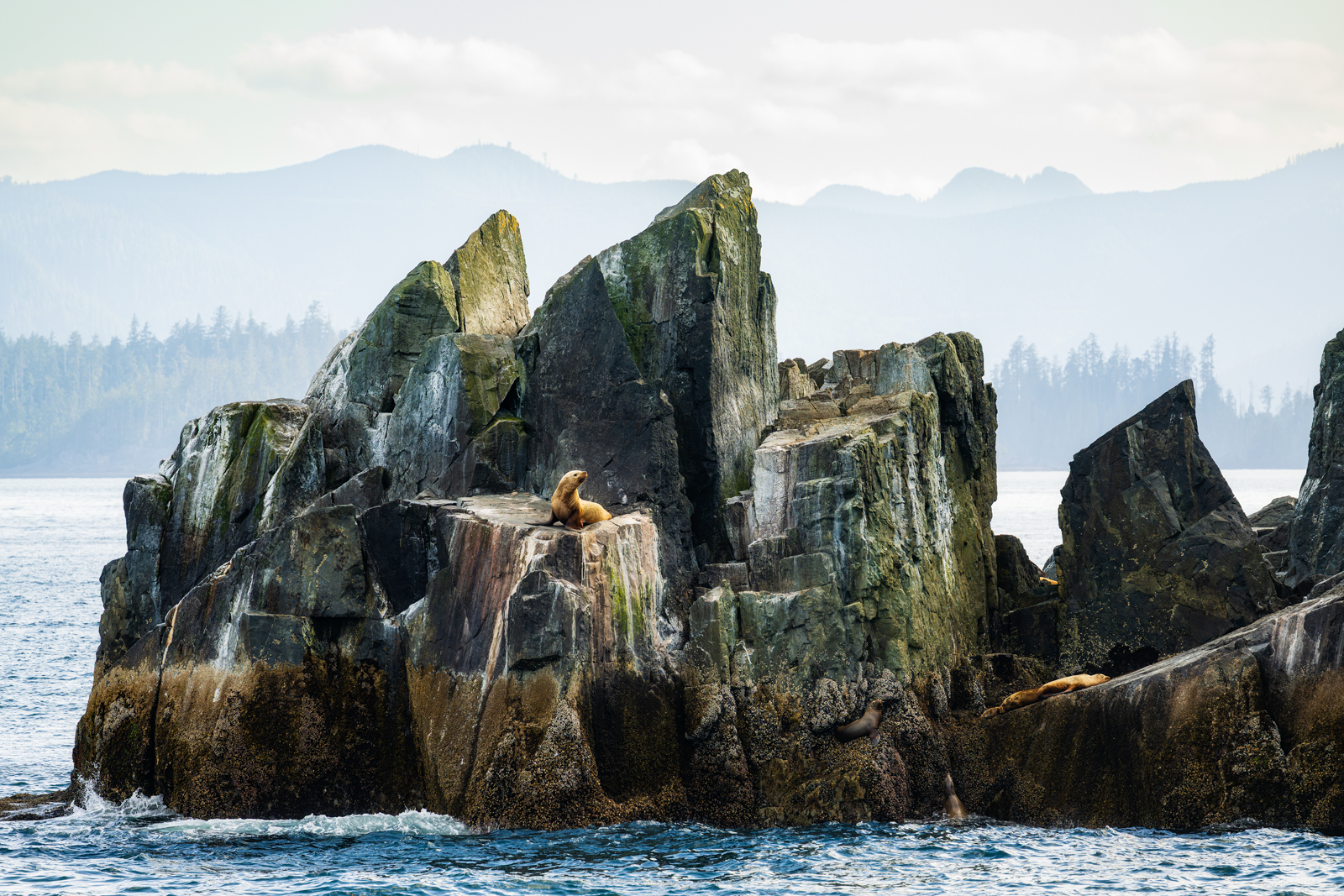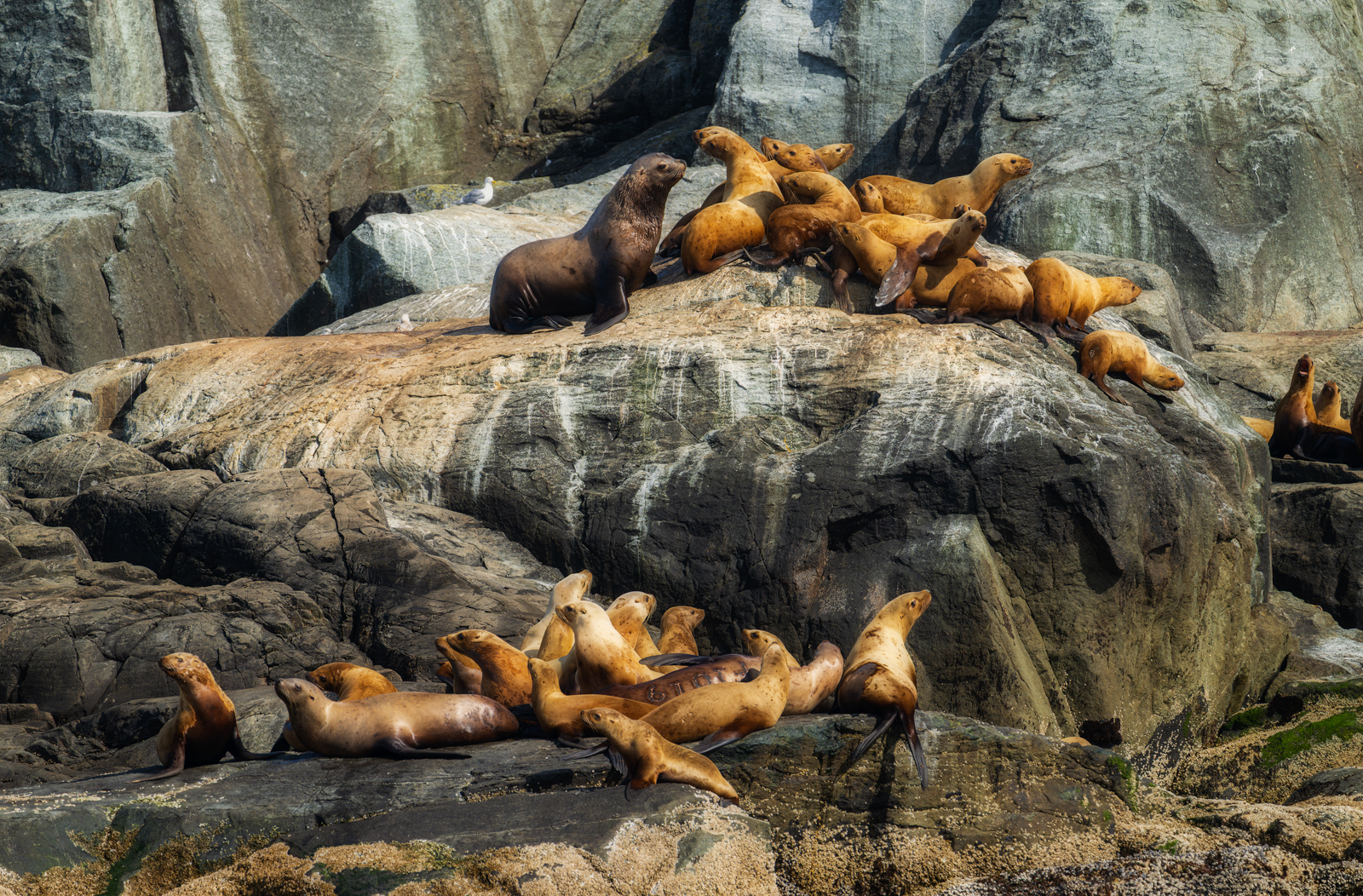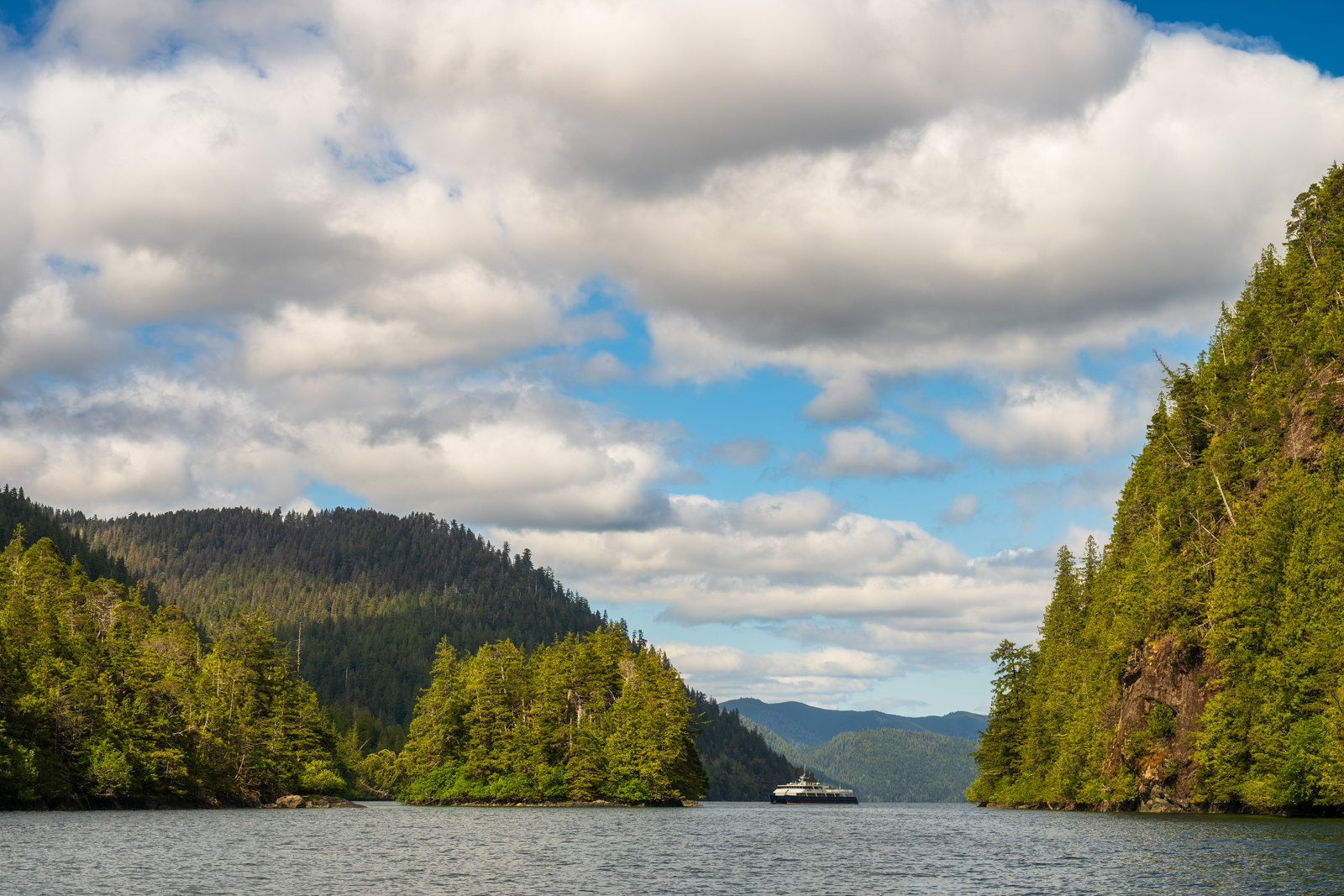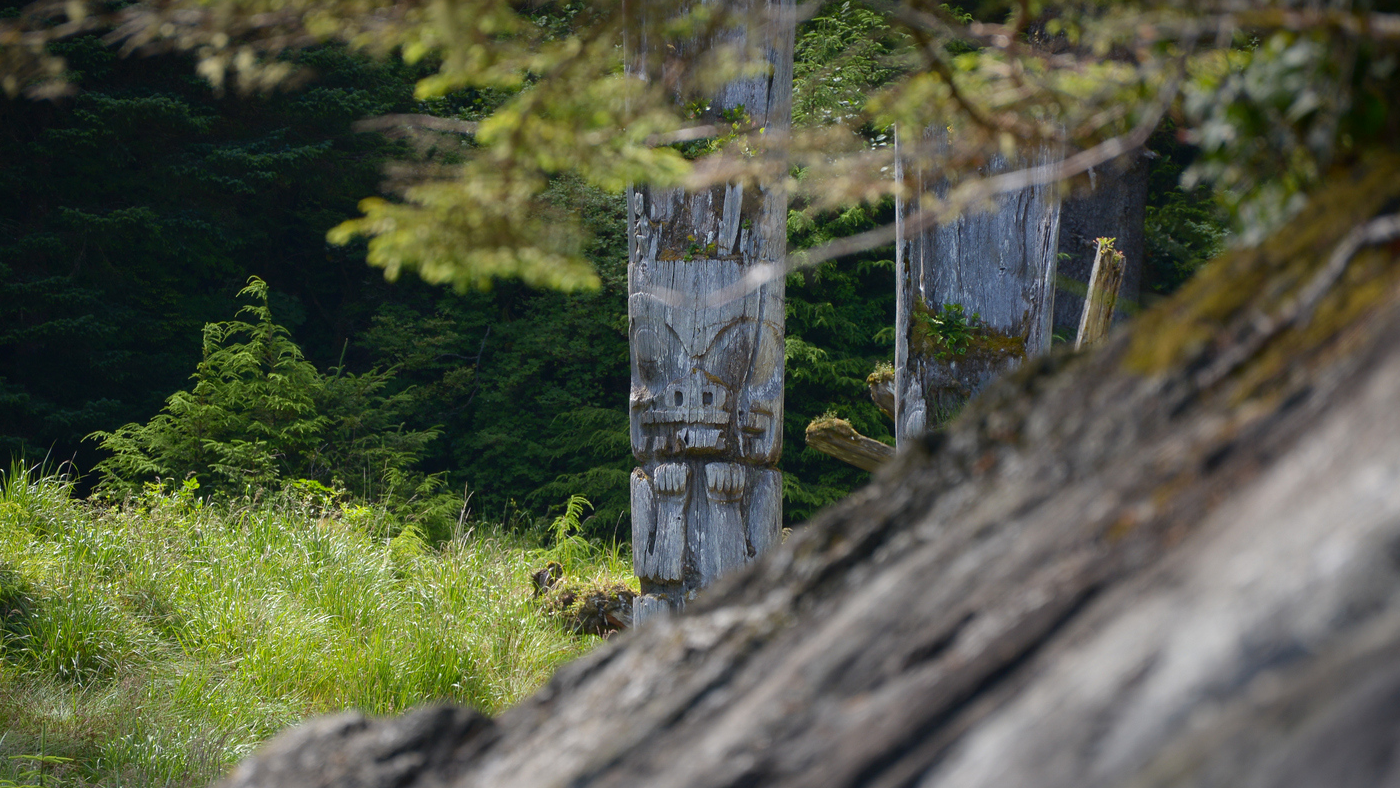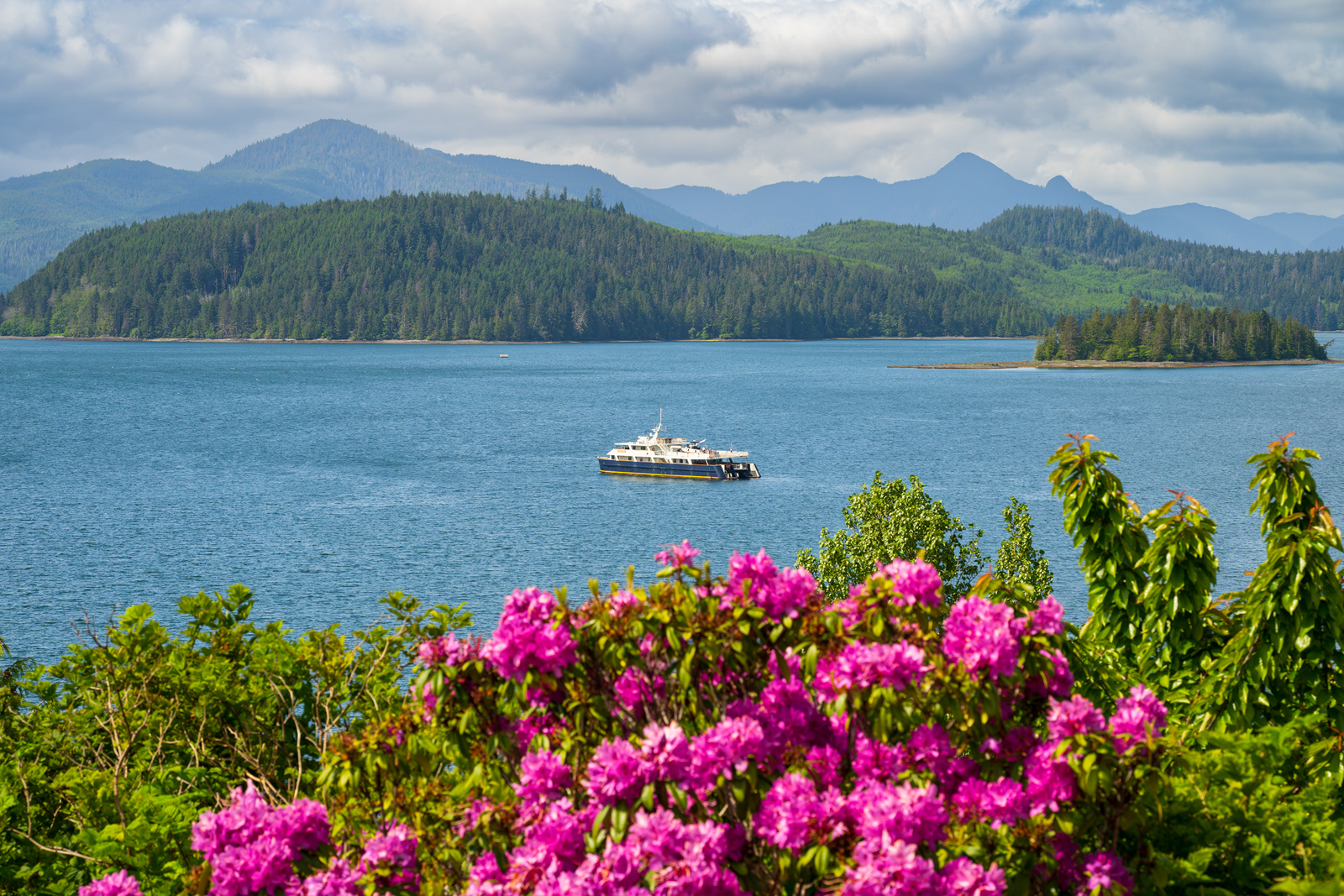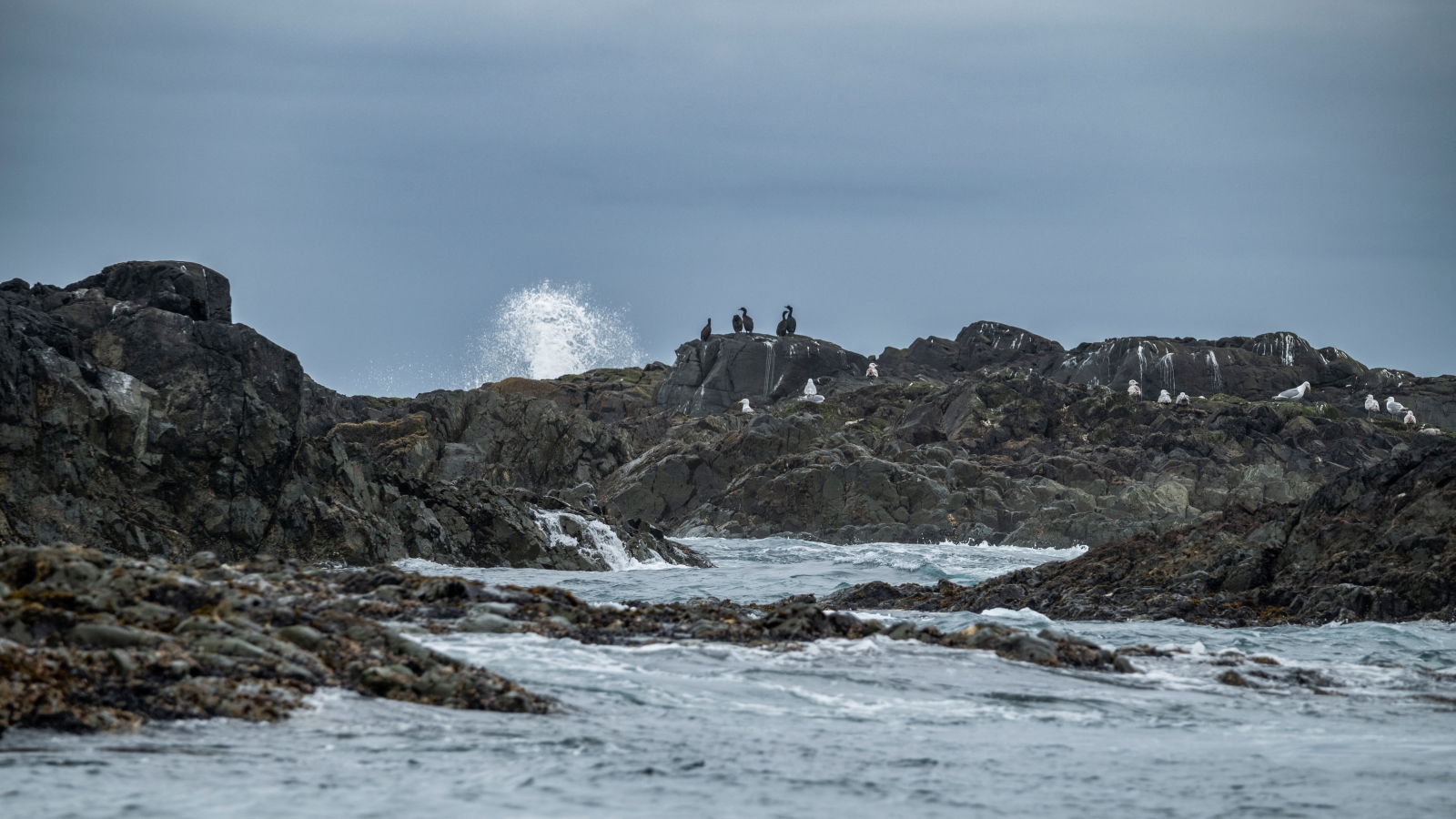With Canadian Geographic Photographer and Ambassador Scott Forsyth, learn how to capture Haida Gwaii’s grandeur through landscape photography.
Remote, rugged, and deeply photogenic, Haida Gwaii is a place that doesn’t just get photographed—it photographs you back. Mist rolls in from the Pacific, forests breathe with ancient quiet, and the light changes by the minute.
Canadian Geographic Photographer Scott Forsyth has returned to these islands again and again, camera in hand. His advice? Come ready for beauty, but also ready to adapt.
1. Photographing the Rainforest: Light, Scale & Texture
Haida Gwaii’s rainforests swallow you whole. The trees tower, the moss softens every edge, and shafts of light can transform a scene in seconds. To do the place justice:
- Go wide: Scott’s go-to is a 14mm lens to exaggerate scale and draw the eye upward.
- Add scale: Slip a person, a trail, or even your own boots into the frame. Without a reference point, the immensity of these forests is hard to grasp.
- Cloudy days are perfect days: Overcast skies act like a giant softbox, giving your shots balanced, even light.
- Play with sunbursts: On clear days, try shooting straight into the sun through the canopy — a small aperture will create magical starbursts among the trees.
Pro tip: Look down as much as you look up. Fungi, ferns, and the forest floor often create micro-landscapes that rival the cedars in beauty.
Photo: Scott Forsyth
A fleeting moment of brilliance—light breaks through the canopy in perfect symmetry.
Photo: Scott Forsyth
A thin layer of cloud softens the light, bathing SGang Gwaay in a warm glow.
2. Weather and Motion: Stay Ready
In Haida Gwaii, the forecast is “expect everything.” Rain squalls, sudden sun breaks, rolling fog — all can happen within the hour. Scott swears by keeping his camera accessible at all times:
- Rain is not your enemy: Storm light often produces the most dramatic images. Protect your gear with weather-sealed equipment or a simple dry bag.
- Use a telephoto lens (400–600mm): Compress distant islands into misty layers, or isolate a sea lion on the rocks.
- Shoot fast on the water: From a moving boat or tender, use shutter priority (1/1000–1/2000 sec) to freeze the moment.
- Stabilize: Turn on image stabilization on both lens and camera body. Even gentle swells can blur a shot.
Pro tip: Don’t put your camera away just because it’s raining. Some of the most atmospheric shots come in those brief breaks of sunlight against storm-dark clouds.
Photo: Scott Forsyth
A panoramic view across the misty ridges of the Haida Islands..
3. What to Pack (and What to Leave Behind)
Scott travels light — but strategic. Here’s his field-tested kit:
- Two camera bodies: one with a 24–120mm, another with a 100–400mm + 1.4x teleconverter
- Ultra-wide lens for forests and dramatic seascapes
- Zooms, not primes: quality zooms reduce weight and swapping
- Plenty of batteries & memory cards: charging may be limited aboard
- Weather protection: dry bags, lens cloths, microfiber towels
He stores RAW files on one card, JPEGs on a second as backup — so no nightly downloading is required.
Pro tip: Leave the tripod at home unless you’re dedicated to night photography. On a boat-based expedition, you’ll rarely use it.
Photo: Scott Forsyth
Don’t worry—you don’t need to pack as much gear as Scott. A good camera, extra batteries, and a sense of curiosity will go a long way in Haida Gwaii.
4. Respecting People and Place
Haida Gwaii is not just scenery—it is homeland. A few cultural courtesies go a long way:
- Always ask permission before photographing Haida Watchmen, carvers, or locals.
- Stay on marked trails in ecological or sacred areas.
- When in doubt, ask a Watchman what’s appropriate.
A note from Scott: “A monumental pole isn’t just art — it’s genealogy, spirit, and story. Photograph with the same respect you’d bring to a living elder.”
Photo: Scott Forsyth
Gord is a Haida Watchman, pictured here standing with quiet strength before a carved totem at Windy Bay—part of the legacy he helps to protect.
Photo: Scott Forsyth
Reg, a Haida Watchman, holds a traditional drum while standing inside a carved longhouse, embodying the heartbeat of culture and continuity.
Photo: Scott Forsyth
Gaajiiaawa, of the Gaagyaals KiiGawaay Skedans Raven Clan, is a HlGaagilda sacred knowledge keeper whose presence we are deeply honoured to welcome aboard.
5. Bonus: Wildlife on the Fringe
Even if landscapes are your focus, the islands’ wildlife has a way of stealing the frame: puffins bobbing offshore, a transient orca cutting the surface, eagles perched on weathered poles.
Bring at least one fast telephoto lens—you’ll thank yourself when a sea lion rookery explodes with sound and motion.
Photo: Scott Forsyth
A lone sentinel on Sea Lion Point.
Photo: Scott Forsyth
A raucous gathering, warmed by rock and sun.
Start Planning Your Photography Trip
Scott’s guidance comes alive on small-ship expeditions, where days begin with mist over the kelp beds and end with alpenglow on basalt cliffs. Maple Leaf Adventures runs photography-focused trips in partnership with Canadian Geographic, with RCGS Ambassadors aboard.
These expeditions balance comfort with access—taking you to remote anchorages where tripods and tour buses will never reach.
Haida Gwaii rewards patience. The best shots are rarely planned—they’re stolen between squalls, discovered on tide-washed beaches, or revealed in the quiet persistence of cedar. Scott Forsyth’s advice? “Keep your camera ready, but also take time to stand still. Sometimes the most powerful image is the one you don’t take—but the one that changes how you see.”
Canadian Geographic Tours Haida Gwaii ToursPhoto: Scott Forsyth
Cascadia anchored in the wild beauty of Haida Gwaii—a place of stories, spirit, and stillness.
Note: While some RCGS Ambassadors are celebrated photographers like Scott Forsyth, others bring expertise in fields such as ecology, art, and cultural history. Past Ambassadors have included naturalist and painter Robert Bateman and environmental advocate Severn Cullis-Suzuki.
